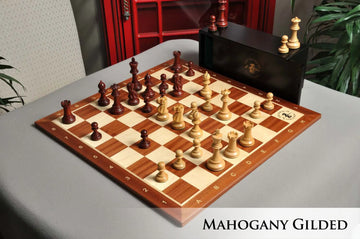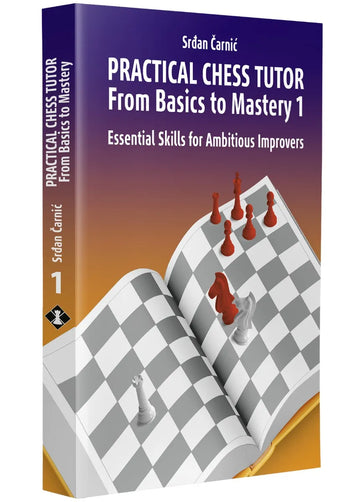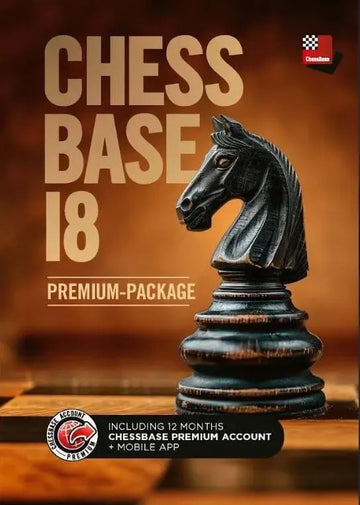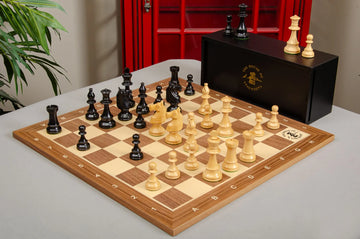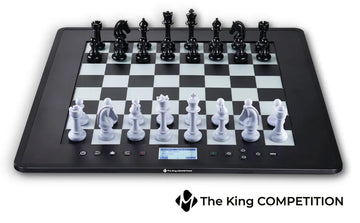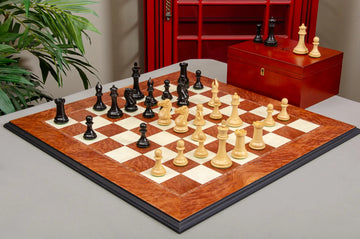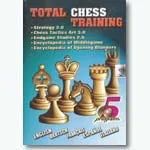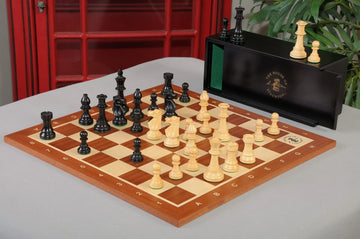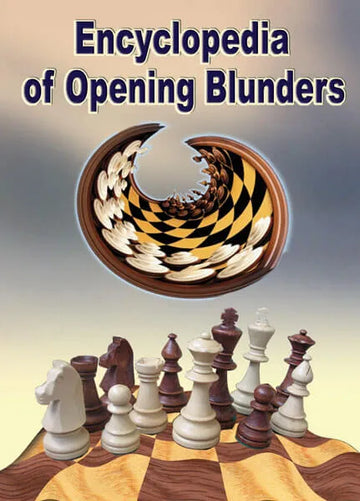Which Mistakes Beginner Chess Players Make
All chess players can make mistakes beginner chess players make. Even the most experienced players of all time! The difference between a beginner and a master is the frequency and severity of those mistakes. Some mistakes are easy to avoid if you know what to look for. If you can avoid those mistakes, you can improve your play and prove yourself as more than just a beginner.

Types of Common Chess Blunders
Chess is hard. There are lots of mistakes beginner chess players make. Just like if you are a beginner piano player, basketball player, or painter, you will make common mistakes. Once you embrace that reality, you can improve. Don’t get frustrated by those mistakes, missed notes, shots, or brush strokes, instead, treat those as opportunities to learn. If you want to learn, you need to understand why your moves are blunders.
Tactical Blunders
One main type of blunder in chess is a tactical blunder. These are common beginner chess mistakes that allow your opponent to play some kind of tactic against you, usually resulting in lost material or even a lost game. Tactical blunders are common mistakes beginner chess players make. There are many kinds of specific tactics that you should learn and learn to avoid. These consist of forks, pins, skewers, discovered attacks, removing the defender, x-rays, and more. If you are unfamiliar with some or all of these basic tactics, then you will need to learn them to improve. Missing a fork or pin can be the difference between winning and losing a chess game. I will assume you have a basic understanding of most of the basic kinds of tactics and help you to understand blunders on a more macro level.
Piece Safety
Not hanging your pieces, leaving them on an unsafe square for your opponent to take, can be the best way to improve your chess. It is difficult to win games when you give pieces away. Similarly, many tactical blunders revolve around undefended pieces and unsafe squares. If one of your pieces is undefended, it could become a target for an attack of some kind. Be aware of your opponent's undefended pieces as well as your own.

In this position white has a move that uses a tactic, a skewer, to win a piece. But it only wins a piece because that piece is undefended! The Queen goes to c8 checking the king and picking up the rook on g8. If you are playing black in this position, be weary of disconnecting your rooks and having undefended pieces like this.
King Safety
It may seem unnecessary to say, but if your king is unsafe, you are in trouble! King safety is the number one cause of tactical blunders. Once there are many checks available for your opponent, you have to be very careful. Keep your king safe. Castle, your king, keep your king well-defended, and make sure you don’t let your opponent at your king easily. Most tactics that lead to your blundering will involve your king's safety. Avoid making moves that endanger your king or bring it out into the open.

Here, white has a nice move made possible by blacks exposed king. What move can white play here, utilizing a pin?
Double Attacks
Forks are sometimes called double attacks, but most good moves in chess are doing multiple things at once. A common blunder is missing moves that do that for your opponent. Double attacks are moves that give you or your opponent the tempo or time in chess needed to complete some sort of move or tactic. If I gave you two moves in a row in any given chess game, odds are you could find some sort of brutal move that won the game for you.
Chess Novice Tactics Are Everywhere!
Basic forks, pins, skewers, etc., are all over your chess games as beginners. You just have to see them! Most novice chess games have a missed basic tactic within the first ten moves. If you are not familiar with those basic tactics, drill them with puzzles. You can use any number of great chess books, but online sources like Lichess also have excellent tools to teach you basic tactics and let you do puzzles with just those themes. I guarantee if you do a hundred fork puzzles the next game you play you will find a fork that you otherwise would have missed.
Positional Blunders in Your Chess Games
Beginners often make tactical errors, and those can be easy to understand once you see the missed tactic. Sometimes, the harder chess blunders to understand can be the positional blunders. What do I mean by positional blunder? A positional blunder in chess is a move that alters your position for the worse in a way not necessarily tied to material imbalances. For instance, in the position below, white captured a knight on f6. You could capture with the pawn, leading to a much less safe position for your king that is entirely unnecessary and avoidable since black could recapture with the queen instead.

King Safety Affected by Positional Blunder
King safety is so important, as I stated before, any move that weakens the king can be a positional blunder. Not castling and leaving your king in the center of the board can also be a positional mistake. These kind of blunders are common mistakes beginner chess players make
Pawn Structure and Unnecessary Pawn Moves
Beginners tend to fall into one of two categories: either they love to move pawns, or they forget they have them! Both can lead to terrible positional mistakes. Pawns, particularly, are tough for beginners because they are unforgiving. If you make a mistake with a pawn, that could haunt you for the rest of the game. Whether that is doubled pawns or allowing your opponent to have a passed pawn, those positional blunders can change the game.
Take this position, for example, black has an isolated pawn. This sort of positional mistake can allow for white to gain an advantage by attacking that pawn.

Unhappy Pieces
One way to know you have committed a positional blunder is if one of your pieces is unhappy. A bad piece is often the result of positional mistakes. Whether it is a bishop stuck behind pawns or a knight completely restricted, look to improve your pieces.
Opening Blunders
Blundering is very possible even in the first couple of moves in a game of chess. Even knowing opening theory does not make you immune to mistakes beginner chess players make. For that reason, the best way to not blunder in the opening of a chess game as a beginner is to follow solid opening principles.
Opening Principles
What do I mean by opening principles? When I teach beginners I tell them to do three things in the opening of a chess game.
- Control the middle. I usually tell them to control the middle of the board with a pawn, just to make things simple. But also when you start developing your pieces you should point them towards the middle and control those squares. Pieces are more useful when they are in the middle of the board, so make sure you don’t put knights on the side of the board, for instance.
- Develop your pieces. It is hard to go wrong in the opening if you develop your pieces. Winning chess is hard when you don't use your pieces. Bring your pieces, especially your knights and your bishops, into the middle of the board to prepare you to make a certain move with your king. Note that I say knights and bishops, not queen. Avoid moving the queen out too early as it will get targeted and lead to more blunders.
- Castle your king. As previously stated, keeping your king safe is vital to playing blunder-free chess. Castling prevents your king from being in danger in the middle of the board. It also, as a bonus, develops a rook at the same time! It’s the only time in chess you can move two pieces at the same time, so take advantage of that.
Endgame Blunders
After playing a successful opening, hopefully, a successful middlegame, then you have to face the dreaded endgame. Beginners tend to make mistakes in the endgame, why? Endgames are hard. Many beginners think the game will get simpler if they just trade down pieces and enter an endgame, but suddenly, the margin of error becomes razor-thin. What are some of the biggest blunders that beginners make in the endgame?
Failure to use What You Have
Beginners tend to forget to use the pieces or pawns that they have in an endgame. They will just move their queen around, forgetting their other pieces, or they will forget they could push a passed pawn to win. Use all the pieces you have in an endgame.
King in the Endgame
Another piece that gets forgotten by beginners in the endgame is the king! King's activity in the endgame is key to endgame success. Forgetting to use your king is a quick way to a loss if you are a beginner. Be careful if there are still pieces on the board, but once that pawn endgame has begun, your king becomes a powerful piece.
Passed Pawns
Beginners forget about passed pawns in endgames. If you have a passed pawn, a pawn with no pawn opposite it or on either file next to it, then you need to push it. If your opponent has one, then you need to stop it.
How Should a Chess Novice Avoid Common Chess Blunders?
If you find yourself making common mistakes beginner chess players make in chess games, start adding this process to your games. Before you make a move, look through all of the possible checks, captures, and threats that you or your opponent have available to you. This may seem like a lot to think, but you already need candidate moves, so you might as well calculate the right moves! Do that by looking for forcing moves: checks, captures, and threats.
Checks, Captures, and Threats
Checks
Examine the position and see if you have any checks. If you don’t, you might miss out on your or your opponent's best move.

Captures
If you don’t have checks that work in your position, or you don’t see any dangerous checks from your opponent, then start looking at captures. Captures are forcing moves because your opponent will want to recapture. If you are playing this as white, what is the threat? The check that black could play doesn’t work because white’s knight defends. But, if you need to notice the threat that black has, which is Qxd4! Removing the defender of the fork. That's a move you might miss if you don't calculate all of your opponent's captures.

Threats
Lastly, look if your opponent has any threats they can make. That threat might be deadly or something you should avoid.
Ask Yourself This Important Question “What Will My Opponent Play?”
Truthfully, if you ask yourself this one question and look through their checks, captures, and threats as an answer, you will avoid blunders. It’s difficult. It takes a lot of disciplined calculation. Letting up for one move could be enough to lose the game. That is part of what makes chess so tough.
Don’t Give Up!
Chess is tough, but don’t give up. Keep practicing, playing, and working hard to improve. Just being aware of the mistakes you are making as a beginner will help push you to the next level.

